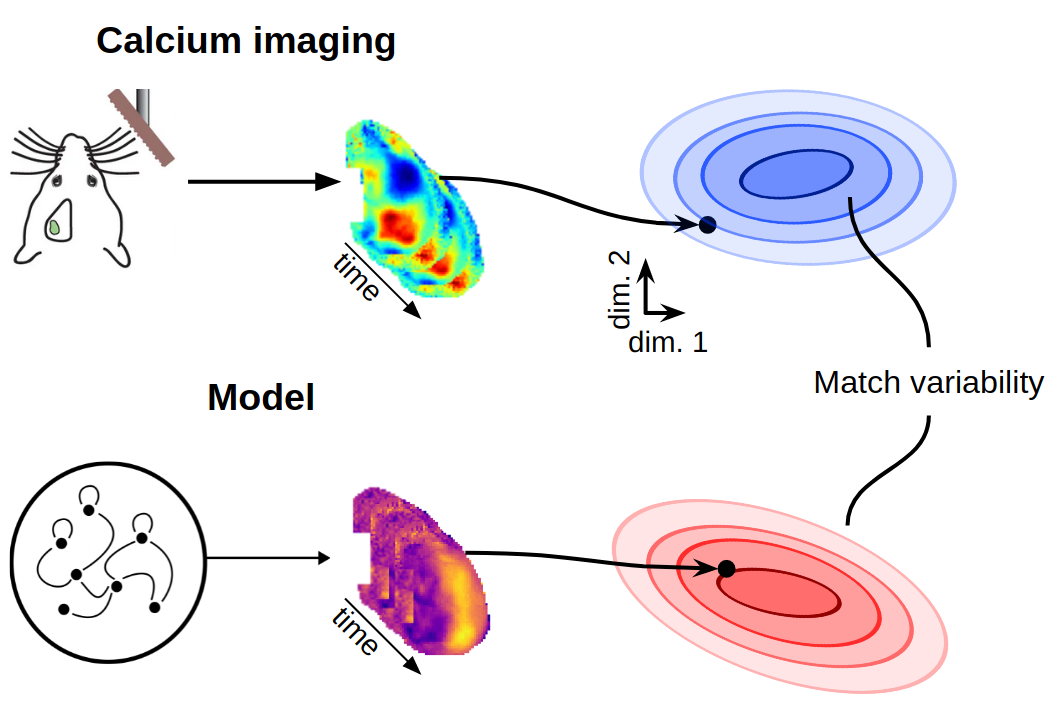Linking brain-wide connectivity, function and dynamics with artificial neural networks
AdaBD made easy
Computational models help simulating biological processes. In this project, we apply novel machine learning approaches to explain electrical activity of neural cells measured in mice performing a behavioral task. Since these computational models could be applied in animal models and humans, they could potentially simplify comparisons between species.

Research project
Computational models play a key role in explaining how brain activity emerges from the underlying neural networks, and how this activity ultimately leads to thoughts and behaviors. By summarizing the essence of the computations performed collectively by complex networks of interconnected areas, such models can help in identifying the critical differences in the function of healthy and diseased brains.
Here we exploit recent advances in artificial intelligence to build more powerful and better interpretable models of large-scale, multi-area neural dynamics and computations. We have developed a novel machine learning approach for fitting artificial, recurrent neural networks to large-scale neural activity. We extensively validated this approach on synthetic, simulated neural activity, and applied it to explain brain-wide neural activity measured with calcium imaging in mice engaged in a decision-making task. Unlike past modelling approaches, the fitted networks capture not just the average activity over many task trials, but also the prominent variability apparent in individual trials.
Our results suggest that a large part of variability in brain-wide activity is internally driven. Additionally, we find that these internally generated activity patterns are remarkably consistent across different animals, with the same brain areas activating in the same temporal order. Furthermore, learning influences the timing of these patterns—some gradually align with specific task events as the animals’ performance improves.
The framework developed in this project can easily generalize to other tasks and recordings and may be applied in mice and in humans, potentially simplifying comparisons between species.
Research groups
Principal investigators: Valerio Mante, Fritjof Helmchen
PhD student: Lucas Pompe
